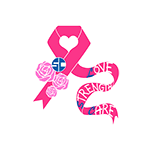
What is Mammography?
3D mammography (Digital Breast Tomosynthesis) is a technique that can detect breast cancer at an early stage, when it is most treatable. 3D mammograms allow radiologist to see more detail in your breast tissue and may reveal breast cancer that would otherwise be covered by overlaying breast tissue.
Advantages of 3D Mammography
√ Enhanced lesion detection – borders of lesion better defined
√ Increased cancer detection rate
√ Reduces false positive recalls
√ Precise lesion localization
Who should have a mammogram done?
1. 40 years old and above
2. Family history of breast cancer
3. Personal history of breast cancer
4. History of benign breast disease
5. Early onset menstruation/late onset menopause
6. Taking harmone replacement therapy
What happens during a Mammography procedure?
• You will be positioned and your breast will be placed on a special platform.
• The breast will be compressed between two firm surfaces to spread out the breast tissue
• Keep still in order to eliminate image blurring due to movement
• X-ray is exposed and multiple images will be taken from different positions
• The process is repeated for the other breast
• Some discomfort may be felt when the compressor compresses your breast. If there is significant discomfort or pain as the compression is increased, notify the radiographer so that less compression is applied.
Things to remember
• Wear two-piece attire consisting of a skirt or pants and a top
• Do not apply deodorant, talcum powder or lotions under your armpit or around your breasts.
• Inform radiographer if you have any symptoms or history
• Bring along with you all previous mammograms reports.
• If you are or suspect you are pregnant, notify the radiographer prior to the procedure so that other arrangement can be made.
• Inform the radiographer if you have silicone or saline breast implants so that special procedures can be performed without rupturing the implants.













